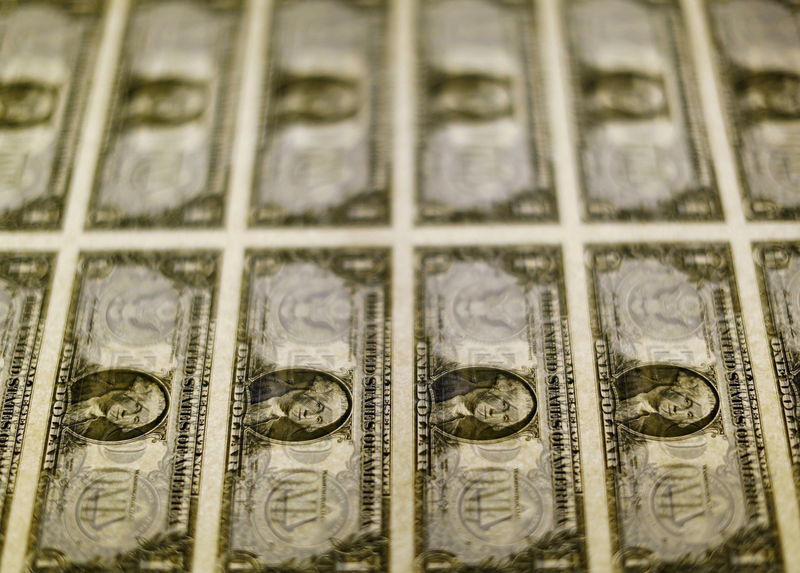Investing.com - The dollar pared back from earlier losses on Wednesday, but still remained near three year lows.
The U.S. dollar index, which measures the greenback’s strength against a basket of six major currencies, was down 0.15% to 88.89 by 11:57 AM ET (16:57 GMT), not far from last week’s low of 88.25, its weakest level since December 2014.
The dollar has come under pressure as it has lost its relative yield attraction for investors. A faster rate of monetary tightening outside the U.S. would lessen the divergence between the Federal Reserve and other central banks.
The Federal Open Market Committee ends its two day meeting today but is not expected to make any changes to monetary policy. However it marks the last time Janet Yellen will serve as Fed chair before the role is taken over by Jerome Powell.
The dollar was little moved from data showing that the U.S. private sector added 234,000 jobs in January, pointing to sustained strength in the labor market. Another report showed that labor costs rose solidly in the fourth quarter.
Separate reports showed that U.S. pending home sales rose for a third consecutive month in December, while manufacturing activity in the Chicago region cooled in January, albeit at a slower than expected pace.
Meanwhile the euro rose, with EUR/USD up 0.19% to 1.2426. Demand for the euro continued to be underpinned after euro zone inflation data for January underlined expectations that the European Central Bank will soon begin to scale back its monetary stimulus measures.
The single currency has risen around 3.5% against the dollar so far in January.
The pound was higher, with GBP/USD increasing 0.28% to 1.4185.
The yen was lower against the dollar, with USD/JPY up 0.57% at 109.40 while USD/CHF fell 0.35% to 0.9324.
Elsewhere, the Australian was lower, with AUD/USD down 0.17% at 0.8069 and with NZD/USD gaining 0.63% to 0.7375.
